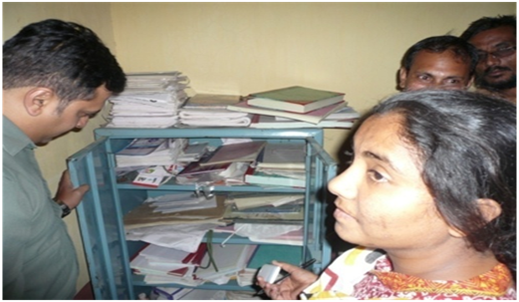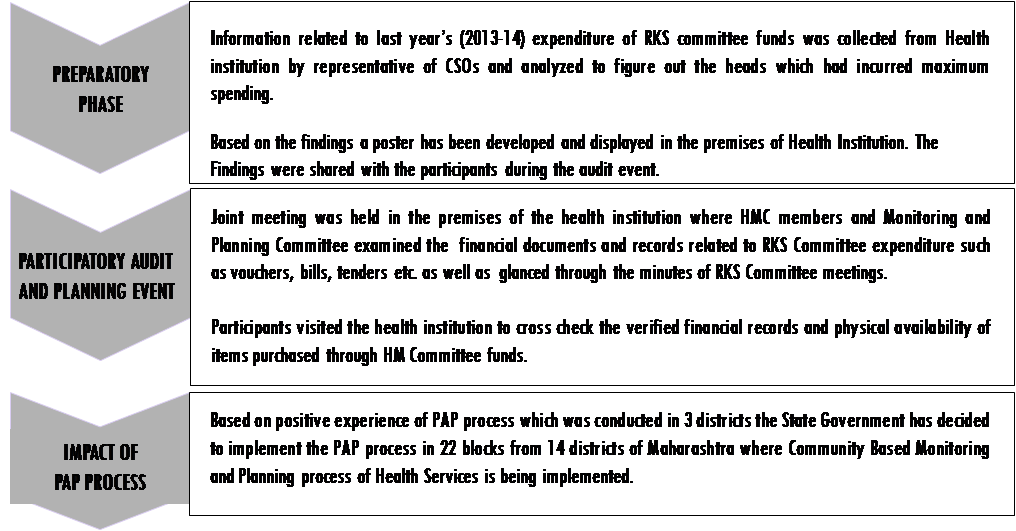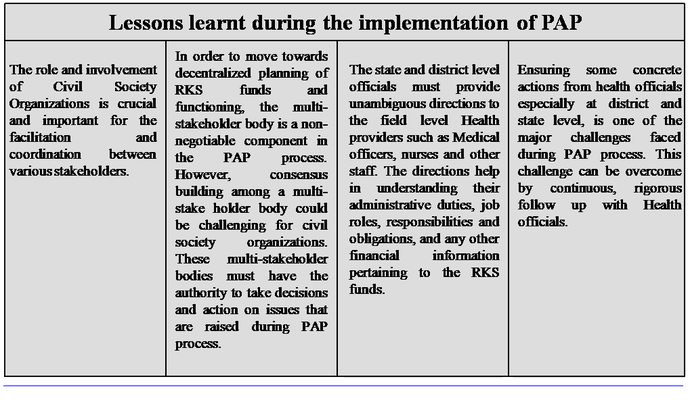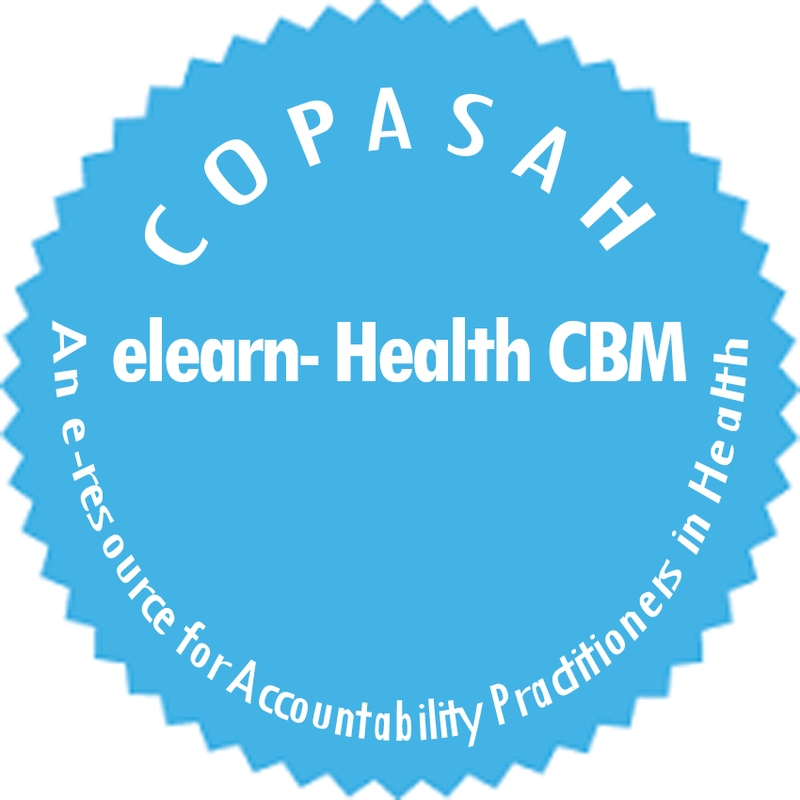
|
|
Participatory Audit and Planning of Rogi Kalyan Samiti
(Patient Welfare Committee) Funds
(Patient Welfare Committee) Funds
A tool for monitoring and ensuring ‘Decentralized Planning’ in the utilization of Health Management committee funds¹ in Maharashtra, India
|
Nitin Jadhav
|
|
‘Social Audit’ as a process is now well known in India, especially in the context of the National Rural Employment Guarantee Act². Today, social audit has provided a platform for ensuring accountability and transparency in the Employment Guarantee scheme. This process provides a space for dialogue between beneficiaries and service providers.
The word “Audit” has its origins from a Latin word ‘’Audire’’, which means ‘to hear’. In ancient Greece, the word ‘audire’ was used in the context of the process of ‘hearing of accounts’. It was usually associated with cross checking of different financial documents by authorities, declaring and sharing the findings of the financial expense, work accomplished and gaps in the implementation of the programs openly with the community. Today, the ‘Audit’ process has become immensely technical and ‘expert oriented’ driven, where the community’s participation is very limited. Take for example, the financial audit of Rogi Kalyan Samitis funds conducted by the state government. The financial audits are carried out |
Participants of PAP process examining records related to RKS funds at Telkhedi PHC of Nandubar district
|
by appointing Chartered Accountants. Although financial audits might bring in accountability, where government officials are accountable to their superiors, one sees a lacuna within the financial auditing mechanism as there is often no system to receiving feedback from beneficiaries.
Keeping this context in mind, the ‘Participatory Audit and Planning (PAP) process of RKS funds’ has taken the core essence of social audit and created a space for Community Based Monitoring Planning Process.
The Participatory Audit and Planning process was conducted in a total of nine health institutions of Nandurbar, Thane and Raigad districts of Maharashtra, during December 2014 to March 2015.
Objectives of the PAP Process
· To ensure decentralized planning of Health Services, focusing on active participation of various stakeholders such as elected members, Health porviders and Civil Society Organizations in decision making of planning and utilization of Health Management Committee (HMC) funds.
· Identify gaps in the expenditure of HMC funds and also to evaluate functioning of HMC.
· Build the capacity of Health Management Committee members on their roles and responsibilities.
In the PAP process, various stakeholders such as representatives of Rogi Kalyan Samiti, Monitoring and Planning Committee, active community members, elected members, health officials and representatives of civil society organizations, and staff of respective Health institutions were involved. Based on the above mentioned objectives, the following steps were taken in conducting the PAP process-
Preparatory Phase- To understand the pattern of expenditure of RKS funds, a representative of Civil Society Organizations collected information for the financial year 2013-14, from the Health institution. The analysis of the financial audit was to assess the components that incurred the maximum financial spending. Based on the findings, a poster has been developed and is displayed in the premises of the Health Institution providing the details of financial statements
Examples of pattern of expenditure - In three Health institutions, maximum HMC funds were utilized for printing logos, photocopying of case papers and stationary during the year 2013-14.
Keeping this context in mind, the ‘Participatory Audit and Planning (PAP) process of RKS funds’ has taken the core essence of social audit and created a space for Community Based Monitoring Planning Process.
The Participatory Audit and Planning process was conducted in a total of nine health institutions of Nandurbar, Thane and Raigad districts of Maharashtra, during December 2014 to March 2015.
Objectives of the PAP Process
· To ensure decentralized planning of Health Services, focusing on active participation of various stakeholders such as elected members, Health porviders and Civil Society Organizations in decision making of planning and utilization of Health Management Committee (HMC) funds.
· Identify gaps in the expenditure of HMC funds and also to evaluate functioning of HMC.
· Build the capacity of Health Management Committee members on their roles and responsibilities.
In the PAP process, various stakeholders such as representatives of Rogi Kalyan Samiti, Monitoring and Planning Committee, active community members, elected members, health officials and representatives of civil society organizations, and staff of respective Health institutions were involved. Based on the above mentioned objectives, the following steps were taken in conducting the PAP process-
Preparatory Phase- To understand the pattern of expenditure of RKS funds, a representative of Civil Society Organizations collected information for the financial year 2013-14, from the Health institution. The analysis of the financial audit was to assess the components that incurred the maximum financial spending. Based on the findings, a poster has been developed and is displayed in the premises of the Health Institution providing the details of financial statements
Examples of pattern of expenditure - In three Health institutions, maximum HMC funds were utilized for printing logos, photocopying of case papers and stationary during the year 2013-14.
- In the sub-district hospital of Thane district, maximum funds were utilized to purchase electrical equipments and building maintenance.
- In Khandas Primary Health Centre of Karjat block of Raigad district, maximum HMC funds were utilized towards building water facility and on payment of internet and telephone bills.
Actual Participatory Audit and Planning (PAP) event- A meeting was organized in the premises of the Health institution with participation of RKS members, Monitoring and Planning committee members under CBMP process; District and State level Health officials and representatives of Civil Society Organizations. The PAP event began with an orientation to RKS members about their roles and responsibilities. This was followed by a presentation of poster and sharing pattern of last year’s RKS funds expenditure. All the participants were involved in the examination of financial documents and records that included books of accounts, vouchers, supportive documents, and proceedings of RKS meetings etc. After the examination of financial documents, the participants took a tour of the health institutions in each ward. They interacted with patients and staff of the institution. This activity helped in cross-checking the verified financial records and physical availability of purchased items through RKS funds.
Examples of the gaps that emerged and resolved during PAP event - In one of the PHCs, the existing constitution of the RKS committee was not as per guidelines such as no representation of elected members and Civil Society Organization. Hence, it was suggested that the committee be reconstituted. Within fifteen days of the audit, with the initiative of the accountant of the facility and the CSO representative, the committee was reconstituted.
In one of the PHCs, the expenses incurred from RKS funds were for
Examples of the gaps that emerged and resolved during PAP event - In one of the PHCs, the existing constitution of the RKS committee was not as per guidelines such as no representation of elected members and Civil Society Organization. Hence, it was suggested that the committee be reconstituted. Within fifteen days of the audit, with the initiative of the accountant of the facility and the CSO representative, the committee was reconstituted.
In one of the PHCs, the expenses incurred from RKS funds were for
|
|
¹In 2005, the Government of India began implementing the National Rural Health Mission (NRHM), which provides flexible funds for local health institutions to promote accessible and effective health care for the rural population. As part of NRHM, Health Management Committee known as ‘Rogi Kalyan Samiti’ (literally, ‘Patient Welfare Committees’) have been set up in each public health facility, which is expected to manage annual untied funds for improved functioning of the facility.
²Mahatma Gandhi NREGA seeks to enhance the livelihood security of the households in rural areas of the country by providing at least 100 days of guaranteed wage employment in every financial year to every household whose adult members volunteer to do unskilled manual work. The unskilled manual work include water conservation and water harvesting; drought proofing (including afforestation and tree plantation); irrigation canals including micro and minor irrigation works; provision of irrigation facility, horticulture plantation
²Mahatma Gandhi NREGA seeks to enhance the livelihood security of the households in rural areas of the country by providing at least 100 days of guaranteed wage employment in every financial year to every household whose adult members volunteer to do unskilled manual work. The unskilled manual work include water conservation and water harvesting; drought proofing (including afforestation and tree plantation); irrigation canals including micro and minor irrigation works; provision of irrigation facility, horticulture plantation
ABOUT AUTHORS
Dr. Nitin Jadhav, is working with SATHI (Support for Advocacy and Training to Health Initiatives), Maharashtra, India which is mainly involved in advocacy for ensuring accountability in Public Health System of Maharashtra. He works as a State Coordinator; Community based Monitoring and Planning (CbMP) process under NRHM, Maharashtra, India.
Dr. Nitin Jadhav, is working with SATHI (Support for Advocacy and Training to Health Initiatives), Maharashtra, India which is mainly involved in advocacy for ensuring accountability in Public Health System of Maharashtra. He works as a State Coordinator; Community based Monitoring and Planning (CbMP) process under NRHM, Maharashtra, India.










